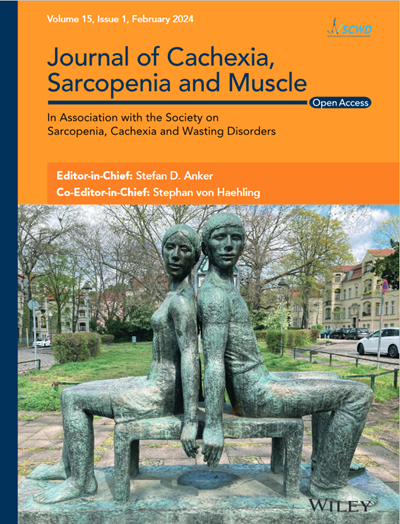SPSB1-mediated inhibition of TGF-β receptor-II impairs myogenesis in inflammation
Abstract
Background
Sepsis-induced intensive care unit-acquired weakness (ICUAW) features profound muscle atrophy and attenuated muscle regeneration related to malfunctioning satellite cells. Transforming growth factor beta (TGF-β) is involved in both processes. We uncovered an increased expression of the TGF-β receptor II (TβRII)-inhibitor SPRY domain-containing and SOCS-box protein 1 (SPSB1) in skeletal muscle of septic mice. We hypothesized that SPSB1-mediated inhibition of TβRII signalling impairs myogenic differentiation in response to inflammation.
Methods
We performed gene expression analyses in skeletal muscle of cecal ligation and puncture- (CLP) and sham-operated mice, as well as vastus lateralis of critically ill and control patients. Pro-inflammatory cytokines and specific pathway inhibitors were used to quantitate Spsb1 expression in myocytes. Retroviral expression plasmids were used to investigate the effects of SPSB1 on TGF-β/TβRII signalling and myogenesis in primary and immortalized myoblasts and differentiated myotubes. For mechanistical analyses we used coimmunoprecipitation, ubiquitination, protein half-life, and protein synthesis assays. Differentiation and fusion indices were determined by immunocytochemistry, and differentiation factors were quantified by qRT-PCR and Western blot analyses.
Results
SPSB1 expression was increased in skeletal muscle of ICUAW patients and septic mice. Tumour necrosis factor (TNF), interleukin-1β (IL-1β), and IL-6 increased the Spsb1 expression in C2C12 myotubes. TNF- and IL-1β-induced Spsb1 expression was mediated by NF-κB, whereas IL-6 increased the Spsb1 expression via the glycoprotein 130/JAK2/STAT3 pathway. All cytokines reduced myogenic differentiation. SPSB1 avidly interacted with TβRII, resulting in TβRII ubiquitination and destabilization. SPSB1 impaired TβRII-Akt-Myogenin signalling and diminished protein synthesis in myocytes. Overexpression of SPSB1 decreased the expression of early (Myog, Mymk, Mymx) and late (Myh1, 3, 7) differentiation-markers. As a result, myoblast fusion and myogenic differentiation were impaired. These effects were mediated by the SPRY- and SOCS-box domains of SPSB1. Co-expression of SPSB1 with Akt or Myogenin reversed the inhibitory effects of SPSB1 on protein synthesis and myogenic differentiation. Downregulation of Spsb1 by AAV9-mediated shRNA attenuated muscle weight loss and atrophy gene expression in skeletal muscle of septic mice.
Conclusions
Inflammatory cytokines via their respective signalling pathways cause an increase in SPSB1 expression in myocytes and attenuate myogenic differentiation. SPSB1-mediated inhibition of TβRII-Akt-Myogenin signalling and protein synthesis contributes to a disturbed myocyte homeostasis and myogenic differentiation that occurs during inflammation.

 求助内容:
求助内容: 应助结果提醒方式:
应助结果提醒方式:


